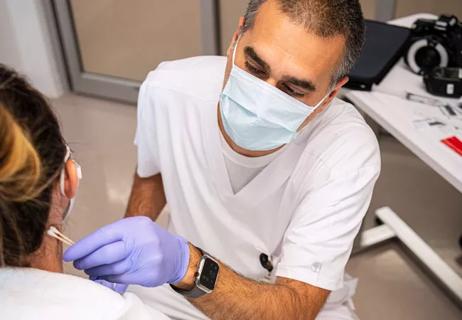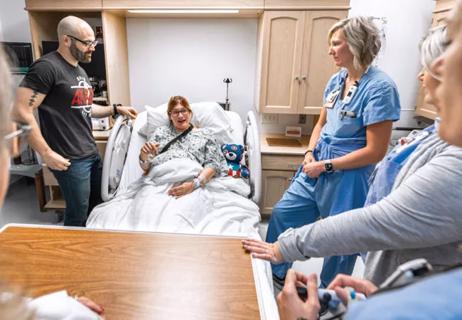Replacing curtains with plastic in the ED resulted in increased patient-experience scores

The phrase “unintended consequences” often carries a negative connotation, but some side effects can be good ones. When the COVID -19 pandemic started, cloth curtains were replaced with corrugated plastic barriers in the ED at Cleveland Clinic Euclid Hospital. Over time, nursing staff noticed an unforeseen positive outcome: Patients perceived that their privacy had been better protected during their visit.
Cleveland Clinic is a non-profit academic medical center. Advertising on our site helps support our mission. We do not endorse non-Cleveland Clinic products or services. Policy
That result shouldn’t come as much of a surprise, says Paul Kambies, BSN, RN, but it earned a closer look after nursing staff observed the trend in patient survey feedback.
Kambies, along with Chelsey Parker, BSN, RN and Ryan McCarty, BSN, RN, presented a poster on the findings to colleagues in the hospital’s nursing Shared Governance Committee. After reviewing the data, they recommended that the hospital consider making the change permanent.
“Plastic barriers were erected in place of curtains as one of our efforts to keep the COVID-19 virus from spreading,” Kambies says. “We needed to be able to treat patients while also separating them from each other. Some of the areas in the ED were pretty open.”
Before COVID-19, five rooms had been separated only by curtains. As a precautionary measure during the pandemic, the hospital built opaque plastic walls and doors extending from floor to ceiling. Door frames were wide enough for patients to be transported on ED carts. Clear windows in the newly erected doors could be made private using the existing privacy curtains.
After the barriers were changed, improvements in patient perceptions of privacy began to show up on post-visit surveys, Kambies says. Their sense of privacy, and their perception of nurses’ concerns for their privacy, noticeably improved — from 88.6 to 89.7 out of 100.
“When we saw that uptick, we noticed that it coincided exactly with installation of the barriers. And of course, that makes sense,” Kambies says. The group tracked responses as time went on and reviewed research about patients’ perception of privacy. In hospitals around the world, emergency departments are often vulnerable to privacy concerns because of the need to provide immediate care. But neither COVID-19 nor other kinds of care administered in the ED negate privacy regulations or the obligation to provide person-focused care.
“It seems sort of obvious that when you separate people with physical barriers, they perceive that their privacy is better protected,” Kambies says. “If they can’t hear conversations on the other side of the barrier, they assume that their own conversations are not being overheard, either.”
The barriers have helped reduce some stress during triage, he adds. “If a patient comes into the ED and is in extreme pain, and is very vocal about it, that’s something we consider when we are deciding where to treat them. We may not want to put them next to a mother and small child, for instance. The barriers aren’t soundproof, but they definitely help.” The barriers also prevent physical disruptions, including people bumping up against the curtain.
Curtain separators have one advantage, however: flexibility.
“One of our treatment areas had a single big door leading into an extra-large room separated by curtains,” Kambies says. “We had a patient in cardiac arrest one day when the room was empty, and we were able push the second bed to the side and use that room as a trauma bay. In three minutes, it went from a two-person room to a large, single-person room, giving us a lot of space to work in. That could be helpful in a number of situations, including if there were a large-scale trauma event in the community.”
The plastic barriers, however, were not designed with permanence in mind. When the time comes to replace them, the hope of the nurses is that the survey results will be taken into consideration. “The change in barriers has provided a view of a simple way to improve things for people when they are already having a stressful experience,” Kambies says. “If we can deliver optimal care while also making them a little more comfortable, that’s what we should be doing.”

Nurses play pivotal role in patients’ ability to recover in the comfort of their own homes

Advocating for patient safety is imperative in fast-paced surgical settings

Advice for those pursuing a WOC nursing career

Redesigned protocols enhance infection-prevention measures

Longevity in healthcare, personal experiences may provide caregivers with false sense of confidence

Specialized team prioritizes trauma-informed care and evidence collection

Collaborative approach leans on expertise of nurses

TeamBirth aims to improve outcomes by facilitating collaboration between patients and caregivers